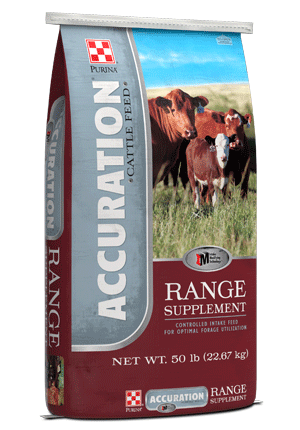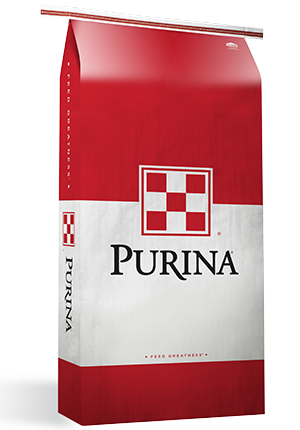
Should I Creep Feed My Calves?
Management : Cow & Calf
Management : Weaned Calf
Nutrition : Supplements
Every operation has the potential to increase weaning weight with creep feeding.
The growth potential of today’s calves exceeds the growth they achieve with just milk and grass. From a genetics standpoint, we’re seeing bigger cows that have calves with the potential to wean off at 600 to 700 pounds. A diet of grass and milk alone can’t provide calves with enough energy to achieve that growth rate.
Creep feeding can make up the difference.
Market conditions: Creep feeding is most profitable when calf prices are high and feed prices are low due to the need to invest less money for more valuable calves. During high calf prices the potential profits can help cover the additional cost to creep feed and make it a lower risk.
Weaning time: Creep feeding can start 80 to 120 days before weaning, resulting in an additional 50 to 80 pounds of gain.[1] This gives calves enough time to get used to dry feed when nutrient needs are low, and primes them to start eating right away post-weaning when their growth accelerates and they require more energy.
Calving window: The tighter your calving window, the better creep feeding works. Additionally, fall calving systems can benefit more from creep feeding. These calves receive creep feed during winter when fresh forage is not readily available. During this time, calves take advantage of the additional energy and become accustomed to the creep feeder. As the weather warms up and forage becomes readily available, the calves return to the creep feeder since they are comfortable with it. This will make it easier for them to make up the energy needs required for their growth potential.
Location: It can be easier to implement creep feeding in some areas of the country than in others. For example, operations in the Midwest or Southeast typically have smaller pastures than those in the West, so calves don’t have to travel as far to reach a creep feeder and the feeder can be checked more frequently. While Western ranches can benefit from creep feeding, accessibility is a consideration.
Start by feeding Purina® RangeLand® Calf Creep at 3-4 months old to support development of rumen microbes, develop calves’ appetite and get them used to the creep feeder. Once your calves regularly consume the creep feed, add in Purina® Accuration® Range supplements with Intake Modifying Technology® to set and control their intake.
Feeding both a creep feed and an intake modifier will ensure calves don’t under-consume, hurting their growth potential, or over-consume, impacting your bottom line. However, remember that introducing Intake Modifying Technology® too early can create a feed diversion as it isn’t as palatable as Purina® RangeLand® Calf Creep.
Does your cattle nutrition program stack up? Find out with a Proof Pays trial.
The growth potential of today’s calves exceeds the growth they achieve with just milk and grass. From a genetics standpoint, we’re seeing bigger cows that have calves with the potential to wean off at 600 to 700 pounds. A diet of grass and milk alone can’t provide calves with enough energy to achieve that growth rate.
Creep feeding can make up the difference.
Creep feeding considerations
Consider these factors when deciding if and when to start creep feeding:Market conditions: Creep feeding is most profitable when calf prices are high and feed prices are low due to the need to invest less money for more valuable calves. During high calf prices the potential profits can help cover the additional cost to creep feed and make it a lower risk.
Weaning time: Creep feeding can start 80 to 120 days before weaning, resulting in an additional 50 to 80 pounds of gain.[1] This gives calves enough time to get used to dry feed when nutrient needs are low, and primes them to start eating right away post-weaning when their growth accelerates and they require more energy.
Calving window: The tighter your calving window, the better creep feeding works. Additionally, fall calving systems can benefit more from creep feeding. These calves receive creep feed during winter when fresh forage is not readily available. During this time, calves take advantage of the additional energy and become accustomed to the creep feeder. As the weather warms up and forage becomes readily available, the calves return to the creep feeder since they are comfortable with it. This will make it easier for them to make up the energy needs required for their growth potential.
Location: It can be easier to implement creep feeding in some areas of the country than in others. For example, operations in the Midwest or Southeast typically have smaller pastures than those in the West, so calves don’t have to travel as far to reach a creep feeder and the feeder can be checked more frequently. While Western ranches can benefit from creep feeding, accessibility is a consideration.
Focus on cost-effective feeding strategies
For creep feeding to be cost-effective, calves should consume no more than 1% of their body weight in feed pre-weaning. This low-level feed introduction helps fuel the rumen microbes – which, in part, makes calves consume more forage and become more feed efficient – without overfeeding nutrients calves don’t need yet.Start by feeding Purina® RangeLand® Calf Creep at 3-4 months old to support development of rumen microbes, develop calves’ appetite and get them used to the creep feeder. Once your calves regularly consume the creep feed, add in Purina® Accuration® Range supplements with Intake Modifying Technology® to set and control their intake.
Feeding both a creep feed and an intake modifier will ensure calves don’t under-consume, hurting their growth potential, or over-consume, impacting your bottom line. However, remember that introducing Intake Modifying Technology® too early can create a feed diversion as it isn’t as palatable as Purina® RangeLand® Calf Creep.
Find the right fit
Creep feeding is an excellent option to create additional value to calves and help them reach their full growth potential. Implementing a cost-effective creep feeding system is all about understanding your options and finding the right program to fit your needs.Does your cattle nutrition program stack up? Find out with a Proof Pays trial.
[1] Faulkner, DB; Ireland, FA. 1999. Performance of nursing calves fed supplement with varying protein levels. University of Illinois Extension.




